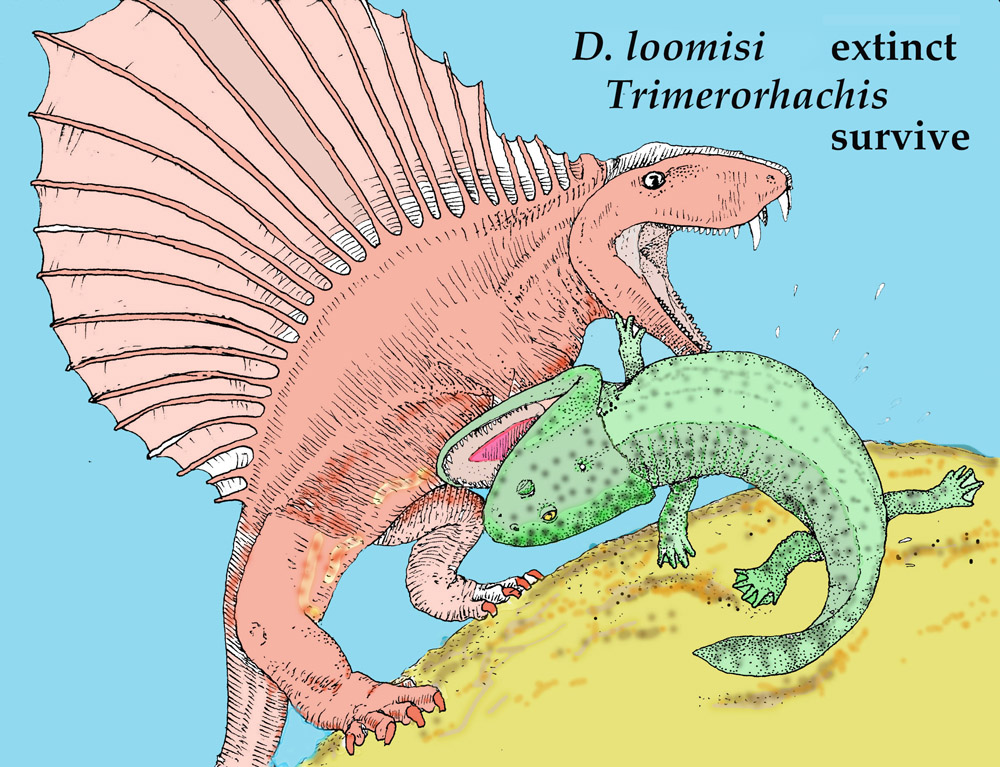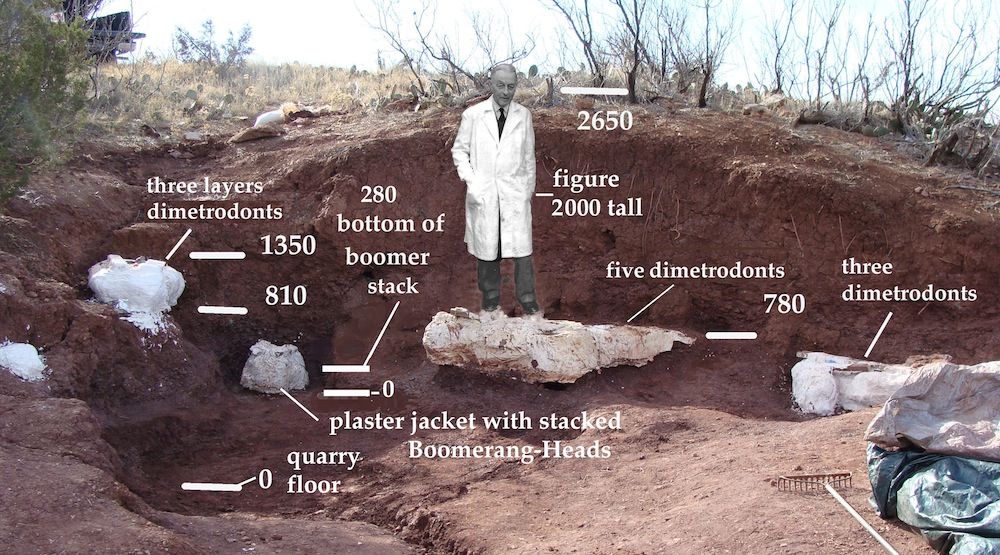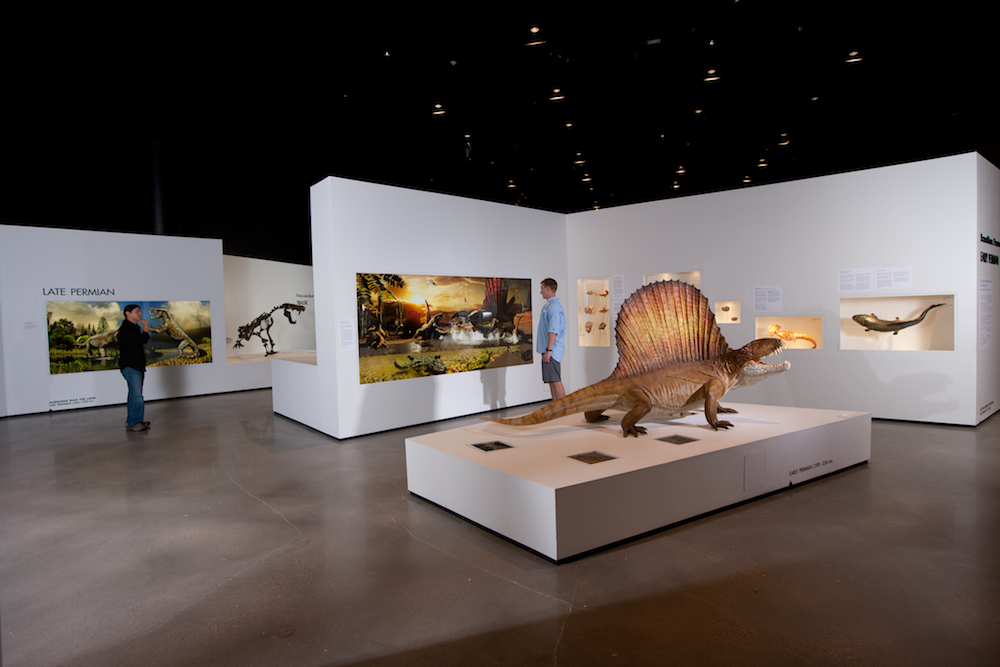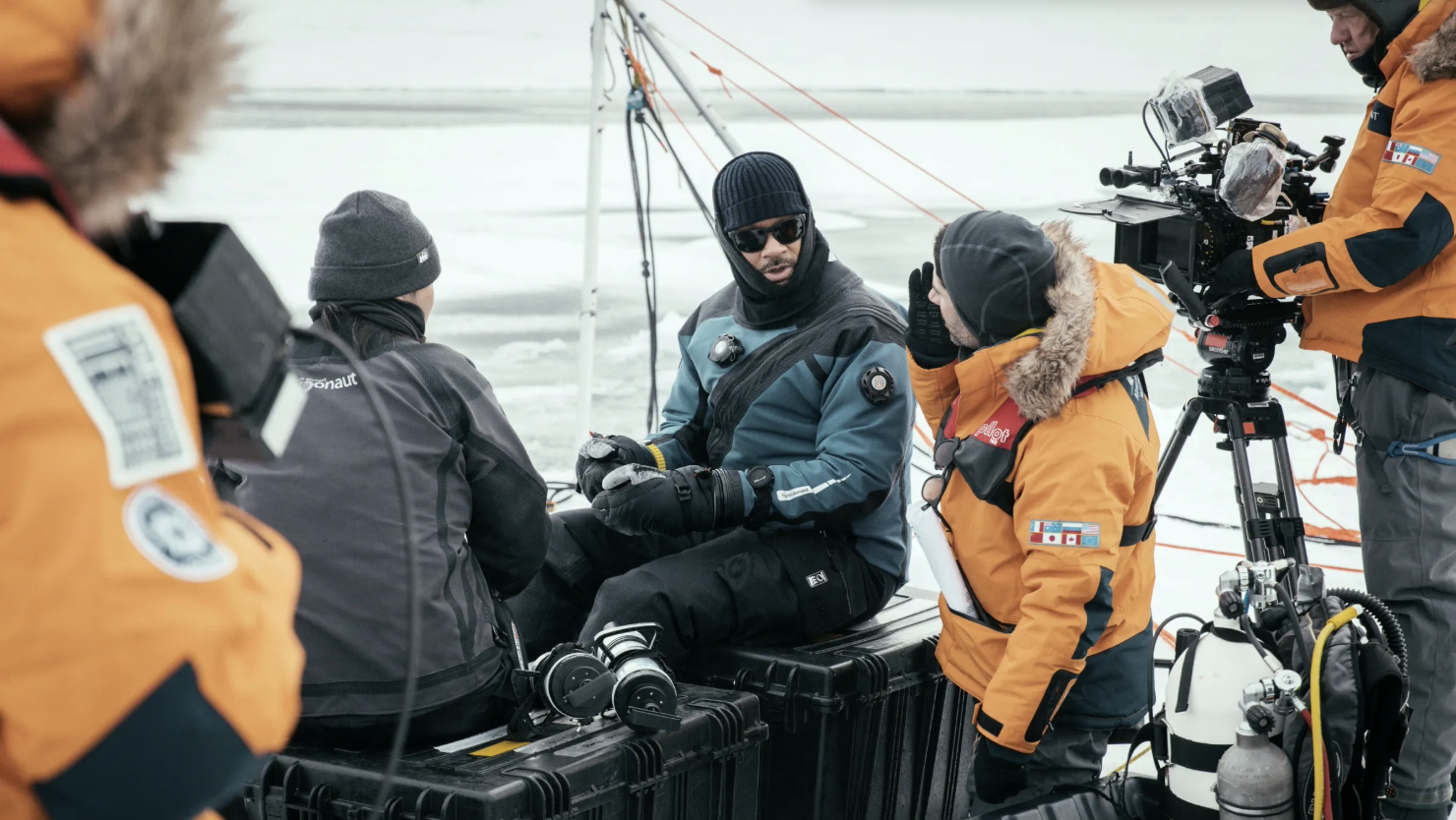In Photos: Fossils Reveal Bizarre Boomerang-Headed Amphibian
Hunter

An illustration of Dimetrodon extracting an unfortunate boomerang-head amphibian from its burrow. Shed teeth mingled with amphibian bones reveal that the fin-back ate these strange burrowing creatures in the Permian period.
Bones of the creature

A dimetrodon skeleton. These lizard-like creatures are actually related to modern mammals.
FIGHT!

Dimetrodon loomisi, flipping another amphibian, Trimerorhachis.
Perspective

A cardboard cut-out in the Texas red beds offers a sense of scale at the site where the Diplocalus (boomerang-head) fossils were found.
A model to examine

A model dimetrodon in the Houston Museum of Natural Science paleo hall.
Head-bangers

An illustration of two bizarre boomerang-heads (Diplocaulus). The strange heads were likely for sexual display to attract mates.
A painful end

Ouch! A fossilized boomerang-head suffered a life-ending bite to the nose by a finbacked Dimedtrodon.
Get the world’s most fascinating discoveries delivered straight to your inbox.
 Live Science Plus
Live Science Plus






